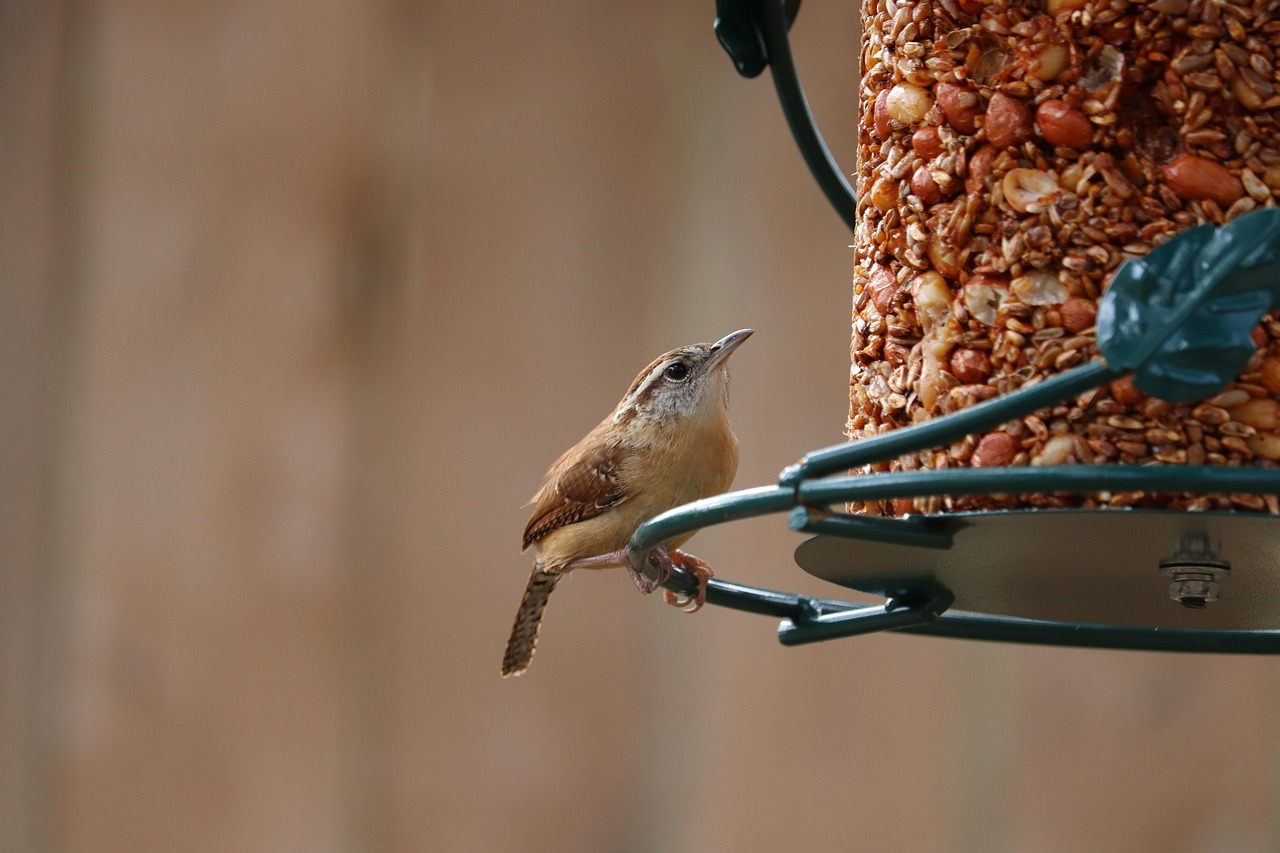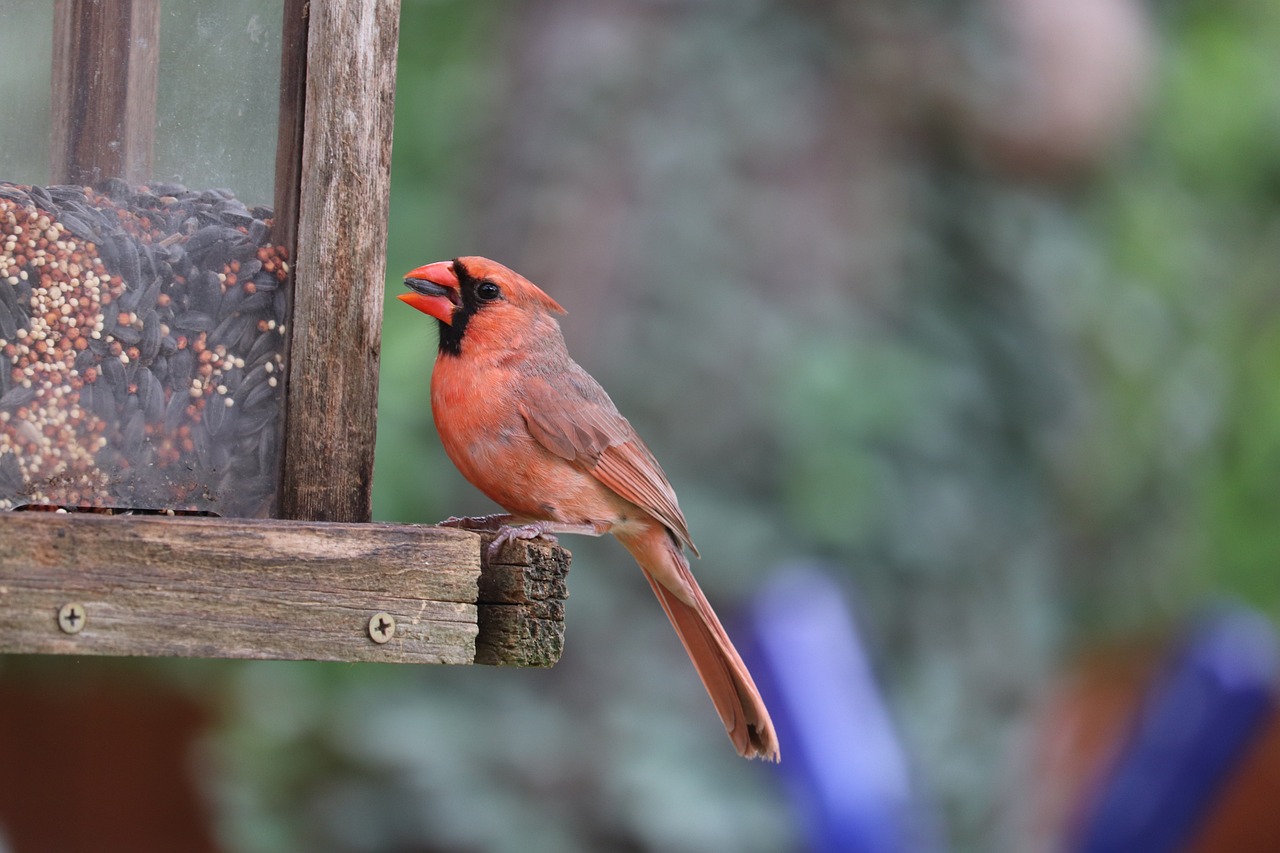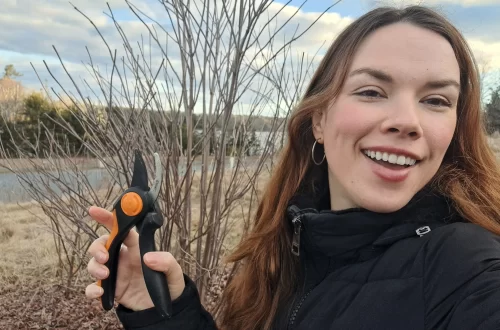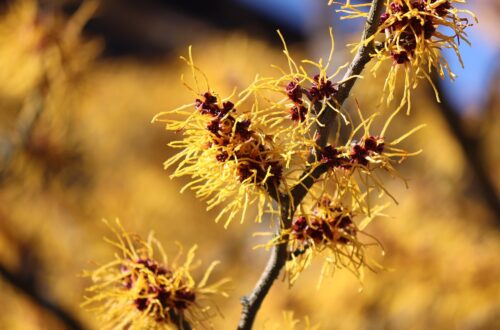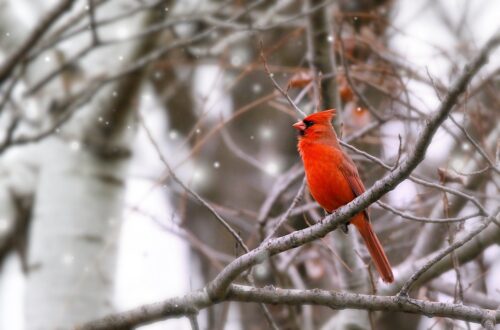Want to attract cardinals and other birds? Find the best types of bird feeders for your backyard here!
Bluebirds love mealworms and finches love thistle and just about everyone loves black oil sunflower seeds! But some bird foods are too small or too large for standard hopper feeders and some birds are more attracted to certain feeder shapes than others. That’s why if you want to attract the most birds to your garden, it’s wise to put as many different bird feeders and bird food types as you can.
In this guide, I’ll walk you through 10 of the most common bird feeders for gardens, plus tips on the types of birds they’ll attract. If you need help choosing a bird feeder, you’ve come to the right spot!
Affiliate disclosure: As an Amazon Associate, I may earn commissions from qualifying purchases.
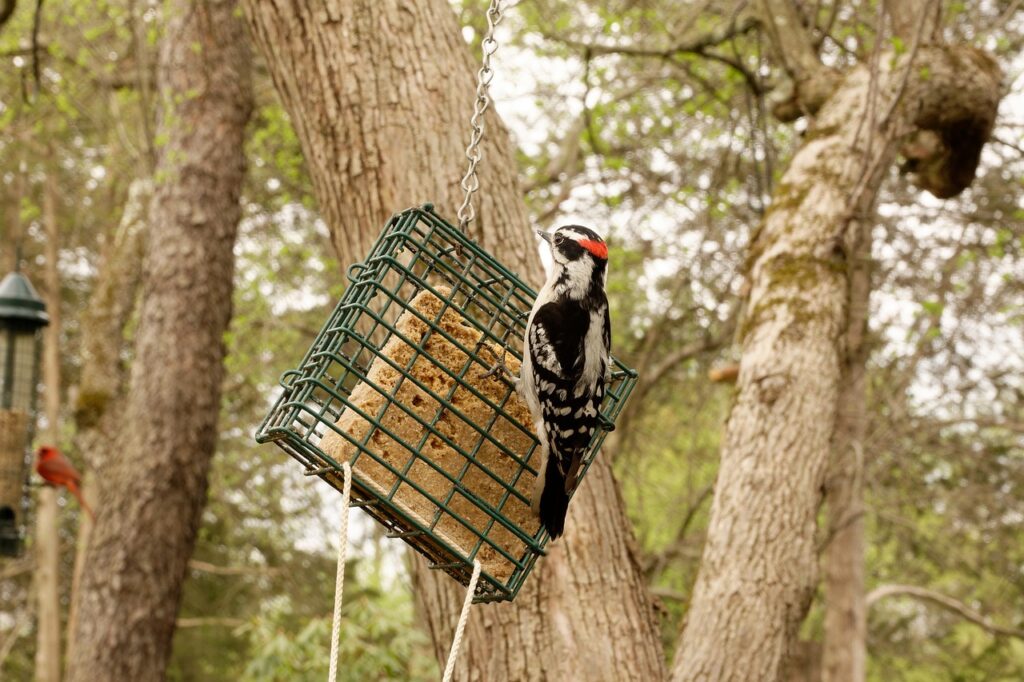
10 Different Types of Bird Feeders to Attract More Birds
Watching songbirds is one of my favorite activities so I’ve installed a lot of different bird feeders on my porch. But if you have a small space garden, you may only have room for a window feeder or a hummingbird feeder. Regardless of the size of your garden and the types of birds you want to attract, you’ll find the perfect bird feeder below!

1. Hopper Bird Feeders or House Bird Feeders
If you only have the space for a single bird feeder, versatile hopper feeders are hard to beat. Often dubbed the “best backyard bird feeders,” hopper feeders appeal to many bird species, including cardinals, and they can be hung on hooks or perched atop bird feeder poles. Plus, hopper feeders fit most types of bird seeds and they’re one of the most durable bird feeder varieties!
Hopper feeders come in different shapes, sizes and colors, but many hoppers look like mini houses, complete with removable roof lids! Large volumes of seeds can be piled into hopper feeders and those seeds naturally trickle down to a lower feeding tray as birds eat. Compared to other feeders, hoppers can be a bit harder to clean, but their roof lids usually keep bird seed nice and dry!
Use with: Black oil sunflower seeds, safflower seeds, cracked corn and bird seed blends.
Good for attracting: Cardinals, blue jays, finches, chickadees, titmice, buntings and sparrows.

2. Tube Bird Feeders
A popular bird feeder for small birds, tube feeders take up less room than hoppers and they’re easy to hang from small hooks or tree branches. Often, tube feeders have removable plastic or metal lids and clear plastic walls adorned with small feeding holes and tiny bird perches. Whether they’re filled with millet or another birdseed mix, tube feeders are known for attracting birds like finches, but they can also lure in cardinals if they have an attached cardinal ring.
Tube feeders come in many colors and their sleek shape keeps seeds dry even in inclement weather. However, seeds can sometimes get compacted in these feeders and cause clogs, so you’ll want to clean tube feeders out with a cleaning brush. Also, if you have lots of squirrels in your area, select metal (rather than plastic) tube feeders since rodents can chew through plastic!
Use with: Black oil sunflower seeds, cracked corn, safflower seeds, crushed peanuts, bird seed blends and thistle seeds (if holes are small enough).
Good for attracting: Finches, grosbeaks, chickadees, titmice and sparrows.

3. Nectar Bird Feeders
Nectar or hummingbird feeders are the best type of bird feeder to keep if you want hummingbirds to visit. Nectar feeders are usually smaller than other bird feeders and they can be made of glass or plastic. Just make sure any nectar feeder you purchase is easy to clean and embellished with orange, red or yellow colors, which are the best colors for attracting hummingbirds!
Unlike other bird feeders, nectar feeders are intended to hold nectar, not birdseed. Nectar can be purchased at stores or you can make your own homemade hummingbird food. Just steer clear of nectar with red dye (isn’t good for hummingbirds) and clean out nectar feeders at least twice a week (daily is better!) to prevent bacterial growth and disease.
Use with: Hummingbird nectar.
Good for attracting: Hummingbirds and orioles.

4. Thistle Bird Feeders or Sock Bird Feeders
Thistle or nyjer feeders look a lot like tube feeders, but these feeders typically have wire mesh sides that are perfect for holding tiny thistle seeds. Fabric sock feeders can be used for thistle too, but these feeders should only be installed in areas with heavy bird activity since thistle socks offer no protection to seeds when it rains and uneaten seed can mold quickly.
Black oil sunflower seeds are known to attract common feeder birds like blue jays. However, thistle or nyjer seeds are irresistible to goldfinches and other small, seeding-eating birds. For best results, hang sock or wire bird feeders near shrubbery to help birds feel safe when feeding.
Use with: Thistle or nyjer seeds.
Good for attracting: American goldfinches and other finches, pine siskins, common redpolls and juncos.
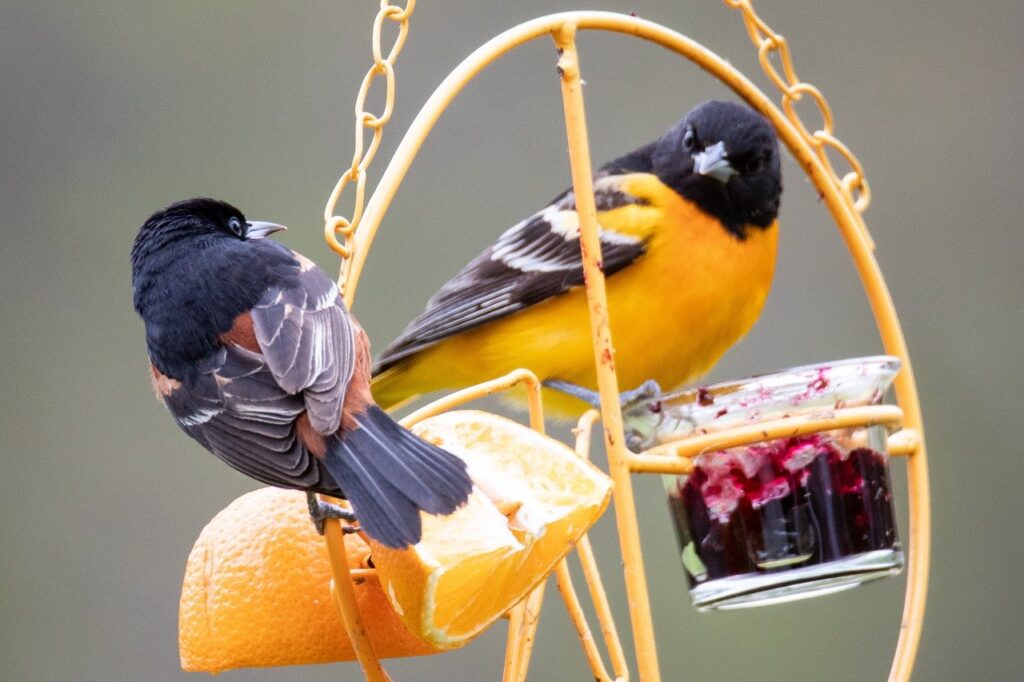
5. Oriole Feeders
The best way to attract more birds to your backyard is to install lots of different bird feeders, including the less commonly used oriole feeder! Oriole feeders are perfectly suited to the needs of orioles and other fruit-eating birds and they often feature pegs for mounting fruit and easy to clean, removable bowls to hold jelly, mealworms and other oriole favorites.
It usually doesn’t matter what color bird feeders are, but if you want to attract orioles, look for an orange colored feeder. Orioles love the color orange, but they do migrate south during the winter so you’ll probably only need to use your oriole feeder from late spring to early fall.
Use with: Fresh or dried fruit, mealworms and blueberry jelly.
Good for attracting: Baltimore orioles and other fruit-eating birds.

6. Squirrel Feeders
Some gardeners find squirrels to be a nuisance, but if you love these furry garden visitors, you may want to install a squirrel feeder just for them. If you do, you may discover that squirrels and chipmunks are less interested in your other bird feeders!
Squirrel feeders come in fun shapes, like tiny picnic tables, and they usually feature a mount for dried corn cobs or large troughs for peanuts and cracked corn. Large birds, like blue jays, may also frequent squirrel feeders and feeders placed near the ground can invite in deer as well.
Use with: Corn and peanuts.
Good for attracting: Red squirrels, gray squirrels and chipmunks.

7. Squirrel-Proof Bird Feeders
On the other hand, if you don’t want squirrels hanging around, try out squirrel-proof feeders instead. Most types of bird feeders, including hoppers and tube feeders, can be found with squirrel proofing components, like baffles, wire cages or tension springs. These feeders allow birds to feed while keeping squirrels at bay and they are the best types of bird feeders to use if you’re worried about losing seeds to voracious rodents!
Use with: Any seeds you’d store in hopper or tube feeders.
Good for attracting: Creatures that aren’t squirrels!

8. Platform Bird Feeders
Platform bird feeders can sit right on the soil or they can be hung from hooks. The perfect feeders for birds that dwell on the ground, platform feeders are irresistible to mourning doves, but they may also be frequented by quail and crows.
Because of their large size, platform feeders usually hold larger types of seeds, like corn and peanuts, but they offer minimal protection against the elements. To avoid issues with seed spoilage, look for platform feeders with mesh bottoms, clean them often and consider installing your feeder under an overhang or porch to keep your seeds dry.
Use with: Mealworms, peanuts, fruit and bird seed mixes.
Good for attracting: Cardinals, bluebirds, sparrows, juncos, towhees and starlings, plus ground dwelling birds, like mourning doves and quail.

9. Window Bird Feeders
If you have a small garden or you love watching birds from the comfort of a cozy chair, you need a window bird feeder. Small yet versatile, window feeders are typically made of clear acrylic and they mount on windows with heavy duty suction cups. Once birds arrive, they’ll be so busy feeding, they won’t notice you (or your kitties) watching them through the window!
Window bird feeders may be too small for large birds, but they’re the right types of bird feeders for luring in sparrows. Window feeders hold an assortment of foods, including dried fruit and mealworms, but they do need to be cleaned often.
Use with: Any foods you’d store in hopper, tube or platform feeders.
Good for attracting: Sparrows, finches, titmice and nuthatches.

10. Suet Feeders
Suet is typically made of animal fat and seeds and its high caloric value helps birds stay warm during winter. Most birds eat suet during the cooler months, but some birds visit suet feeders at other times of the year. Suet is particularly appealing to woodpeckers, which is why these feeders are often installed near trees.
Suet feeders can be attached to bird feeders and they may come in different shapes to fit suet balls. One of the major perks of suet feeders is that they keep squirrels from running off with your suet cakes!
Use with: Suet.
Good for attracting: Woodpeckers, nuthatches, northern flickers and titmice.

Frequently Asked Questions About Attracting Backyard Birds
How many bird feeders do I need?
You can have as many bird feeders as you want, but the more feeders you install, the more birds you’ll attract!
Where is the best place to position a bird feeder?
Bird feeders installed under trees or near shrubs help birds feel safer and birds can easily escape if hawks fly overhead.
What kind of bird feeder attracts the most birds?
Hopper feeders are known to attract the largest variety of birds and they fit most types of bird seed.
